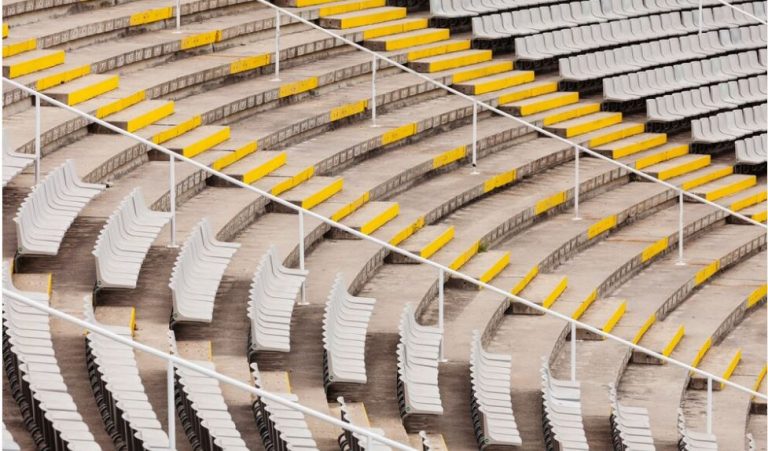One of football’s most revered landmarks is about to undergo a historic transformation in the center of Madrid, where the game is played from corner cafés and throbs through cobblestone streets. Real Madrid’s famous fortress, the Santiago Bernabéu, is undergoing more than just renovations. It is undergoing a rebirth.
The stadium’s ambitious €1.2 billion renovation was initially scheduled to be completed by 2022, but the pandemic, supply chain interruptions, and pressure from global inflation caused a significant delay. Amazingly, though, and in spite of the odds, Real Madrid now anticipates finishing before the summer of 2025. Those closest to the project say that every day and every euro has been worth the wait.
Santiago Bernabéu Renovation Overview
| Attribute | Details |
|---|---|
| Location | Chamartín, Madrid, Spain |
| Project Launch | 2019 |
| Estimated Completion | Summer 2025 (with soft operations ongoing since late 2023) |
| Renovation Cost | €1.2 Billion (approx.) |
| New Seating Capacity | ~84,744 (up from ~81,000) |
| Architectural Firms | L35 (Spain), Ribas & Ribas (Spain), GMP Architekten (Germany) |
| Key Features | Retractable roof, underground pitch system, 360° scoreboard, esports zone |
| Revenue Impact | Expected increase from €150M to €400M per year |
| Reference | StadiumDB.com |
A futuristic arena that hasn’t lost its soul
The Bernabéu is more than just a venue; to those who have wandered beneath the ancient steel trusses or sat amid the roar of 80,000 devoted, it is a cathedral of glory. However, this iconic stadium’s most recent iteration, which is adorned with sleek steel and glistening glass, was created to host international events in addition to games.
The club has established the Bernabéu as a leader in venue versatility by incorporating state-of-the-art technologies like an underground pitch storage system, which is housed in a greenhouse with temperature and light controls, and a massive retractable roof. The outcome is especially creative: a stadium that can be used as an esports theater, concert venue, and football field with ease.
The 360-degree LED video screen, which is haloed above the field, provides an NFL-caliber fan experience. Comfort, spectacle, and sustainability have all been incorporated into the redesign of every seat, suite, and building. It’s a cultural and architectural transformation.
Roadblocks, Delays, and the Cost of Ambition
Of course, there are challenges associated with any large-scale endeavor of this size. Few could have foreseen the worldwide pandemic that would put a months-long halt to construction when the renovations first began. The increase in material costs brought on by the geopolitical turmoil in Ukraine was also not anticipated.
Real Madrid had to extend its original €575 million loan with JP Morgan by an additional €225 million as a result of these disruptions, which also caused costs to skyrocket and significantly slow progress. However, the club managed its resources remarkably well and formed strategic alliances to stay on course.
The Bernabéu was prominently used as a logistics and healthcare center during the pandemic, demonstrating both flexibility and a strong sense of community. The club’s identity is defined as much by its moral and financial tenacity as by its awards.
Harmony in the City and Business Ability
Not only is the interior of the renovated Bernabéu impressive, but so is the way it blends in with Madrid’s urban setting. Located in the Chamartín neighborhood, the stadium’s renovated facade and the plazas around it welcome guests all year long, fusing sport, business, and leisure into a single, cohesive experience.
Real Madrid built a stadium that is open all year round by investing in mixed-use retail, event-hosting facilities, and hospitality areas. The Bernabéu is now a highly effective economic engine thanks to these improvements, which are predicted to increase its yearly revenue from €150 million to over €400 million, which was its pre-renovation level.
This change is transformative as well as significant. In a time when teams are evaluated not just on goals but also on their worldwide presence and financial stability, the Bernabéu is Real Madrid’s most valuable asset.
The Countdown Has Started: What’s Left?
Even though games have been played at the stadium since late 2023, finishing touches are still needed. These include improvements to the South End, pipe concealments, façade lettering, and the surrounding urban infrastructure. Club insiders claim that these final touches are small and developing quickly.
Real Madrid plans to formally unveil the finished Bernabéu by the end of the 2024–2025 season, most likely with a number of concerts and international gatherings. It is anticipated that Taylor Swift’s already confirmed first performance will garner international attention and mark the stadium’s spectacular rebirth.
FAQs — Santiago Bernabéu Renovation Completion
- When will the renovation be fully completed?
The project is expected to finish before the summer of 2025. - What events will mark the inauguration?
A series of concerts and sporting events, including Taylor Swift’s tour, are scheduled. - How much has the renovation cost?
Around €1.2 billion, financed through a combination of loans and commercial partnerships. - Has the stadium’s capacity increased?
Yes, from ~81,000 to ~84,744 seats. - What new features have been added?
Retractable roof, underground pitch storage, 360° screen, esports area, updated museum, and enhanced commercial zones.


